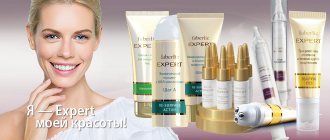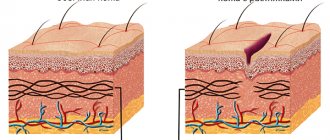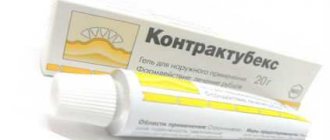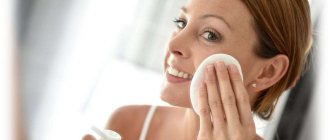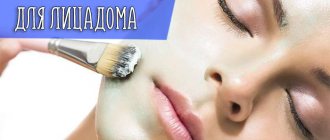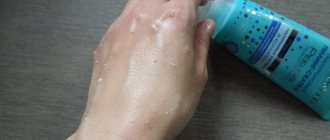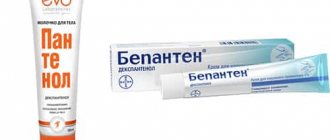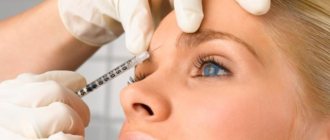Choosing between chemical peels and lasers for skin restoration can often be confusing, as the words "laser" and "chemicals" conjure up images of harsh procedures. In fact, laser skin treatments and chemical peels rejuvenate rather than damage the skin. Both help restore a healthy, youthful glow to the skin. Therefore, you can find out whether chemical peeling or laser resurfacing is better after comparing all the main characteristics.
To determine which treatment is best for your individual skin type and needs, learn a little more about the benefits each treatment provides. It is very difficult to say whether chemical peeling or laser resurfacing is better, since the procedures are based on completely different technologies. Each method has its pros and cons.
Treatments for skin restoration
Skin resurfacing is designed to reduce wrinkles, discoloration, acne scars and other blemishes, quickly improving the outer layer of your skin. Once the damaged outer layer of skin is removed, healthier, younger-looking skin is revealed. The choice of skin resurfacing procedure largely depends on several factors:
- Your skin type.
- Depth of lines and wrinkles.
- Severity of sun damage.
- Degrees of uneven skin pigmentation.
In this case, facial rejuvenation occurs as effectively as possible. You need to understand that the main feature of any cosmetic procedure is its components and impact on the human body. Thus, you need to look for the most suitable methods for your skin.
Advice: The quality and advantages of a particular procedure completely depend on the equipment used and the skill level of the specialist. Therefore, you should only contact trusted beauty salons.
The difference between laser resurfacing and chemical peeling
A significant advantage of the modern laser method is its ability not to burn the surface of the skin, but to evaporate it, so after the procedure there are practically no such burns and scars on the face as after chemical peeling.
In addition , when getting rid of acne using hardware, you can control the depth of grinding .
But don’t completely discount mechanical peeling with acids , since by choosing it, you can complete the entire course of treatment for acne in just two months, whereas laser peeling will take six months.
The cost of these two procedures also speaks in favor of the chemical method.
Choosing one of these methods on your own is risky; it is worth consulting with a competent cosmetologist .
After examination, he will be able to eliminate the risks associated with the patient’s age, objectively assess the condition of his skin, and then prescribe one of the types of chemical or laser peeling discussed above.
Ablative and non-ablative laser
Laser skin resurfacing procedures can be either ablative or non-ablative. Ablative laser therapy uses short pulses of high-energy, amplified light waves to help remove blemishes from your skin. It targets both the superficial and deeper layers of your skin.
Important! Non-ablative laser treatment targets only the middle and deep layers of the skin, leaving the superficial layer intact.
Both ablative and non-ablative laser treatments stimulate skin cells to produce more collagen and elastin, two protein components responsible for keeping your skin tight and firm. It's important to note that there is no absolute "best" laser option, as results from each vary depending on individual skin types and needs.
For example, ablative lasers are best suited for those with significant skin discoloration and severe sun damage. Alternatively, non-ablative lasers are best for superficial pigmentation patches, extreme redness such as rosacea, and the appearance of mild to moderate facial lines.
Type of laser peeling
Each technology has a number of features that make it unique, so you need to know them all. One of our most popular laser treatments is Fractional Carbon Dioxide (CO2). This type of laser treatment is preferred by many due to its unique benefits:
- This only affects a specific part of your skin, while allowing enough light to safely penetrate into the middle and deep layers of your skin.
- Low surface recovery and deeper coverage.
- Addresses a wide range of issues including improving uneven skin tone, scarring and the appearance of fine lines and wrinkles.
- Produces fast results.
The features of the presented technology have many positive effects on human health. They have minimal negative impact, so you get effective results.
Chemical or laser peeling?
The choice depends on the presence of contraindications, time of year, financial capabilities and availability of free time. For example, a full course of superficial chemical peels will require about two months, during which the skin should not be exposed to ultraviolet radiation and elevated temperatures. In some cases, chemical exposure to the skin may not give the desired result.
A course of fractional laser peeling may require more time, once a month, but it is possible that all existing problems will be solved in one session.
The difference in cost also plays a significant role. Chemical peels are significantly less expensive in many cases, and are often preferred due to the short recovery period.
In any case, choosing a treatment method - chemical peeling or laser resurfacing - should be a qualified cosmetologist who can assess all the risks of a particular procedure and recommend treatment appropriate to the type of aesthetic problem present.
Benefits of laser skin resurfacing
The number of laser skin resurfacing treatment sessions depends on the severity and extent of your skin problems. With so many different types of laser skin treatments available, it's not surprising to feel confused. To help you make the right decision for your needs, it's best to think about your skin care goals.
Recommendations: You should not frequently attend the presented procedures, as this can only harm your skin.
Whether the method is ablative or non-ablative, laser skin resurfacing can help you do the following:
- Change skin color (for example, remove brown spots).
- Reduce the appearance of mild to moderate facial wrinkles.
- Pay attention to sun-damaged skin.
- Improve and potentially eliminate redness. Lighten or possibly eliminate scars.
All advantages are based on professional experience that has been accumulated over a long time. Thus, if deviations or negative aspects are observed after the procedure, this means that the technique was performed incorrectly.
Chemical peels
While laser skin resurfacing uses light energy to stimulate skin regeneration and stimulate collagen production, chemical peels use an applied solution to gently remove the outer layers of skin. Chemical solutions vary depending on strength and specific ingredients. The extent to which they exfoliate may depend on how they are applied and how long they remain on the skin.
Chemical peels and laser resurfacing are treatments to exfoliate (peel away layers) of the skin. Both types of treatments offer multiple “levels” that determine how deep the exfoliation goes. Exfoliating your skin can improve its texture and reduce wrinkles, scars, acne and other blemishes.
Types and characteristics of chemical peeling
It has a second name - chemosurgery . When performing it, acids are used; they act gently, without causing pain.
The choice of acid used and the duration of the procedure depend on the extent of acne damage to the skin.
After the first chemical peeling procedure, even more acne may appear, and the skin on your face will be red for two days. But after the second time everything is restored, due to the fact that the skin gets used to the improved metabolism.
Chemical peeling can reduce the appearance of inflammatory processes on the face, cleanse the sebaceous glands, rid the skin surface of impurities and even out its color.
After completing the whole course, small pigment spots disappear and flaky areas of the skin are eliminated.
Types of chemosurgery
The effectiveness of the procedure will depend on the type and concentration of acids. Depending on this, there are three types of chemical peeling:
- Superficial . This procedure is light in nature and is used for minor skin defects, as it affects only the upper layer. It brightens the skin and eliminates fine wrinkles, but to maintain the results, superficial peeling must be repeated every six months. Its implementation involves the use of brossage or gamma, a special microcrystalline scrub and film masks.
- Middle . Just like the previous type, it can be carried out at any time, even in summer, but you should follow the recommendations of a cosmetologist. Its action extends to obvious age-related changes: the presence of pigmentation and small scars, which usually remain in acne areas. This peeling activates the metabolic processes of cells, after which the skin rejuvenates.
- Deep . Only carried out in winter when the weather is cloudy. After it, the skin becomes very sensitive and susceptible to ultraviolet radiation. This type of chemical peeling is performed only in a hospital setting; it requires anesthesia, since acne treatment is carried out at the level of the reticular dermis. This procedure can even remove old stretch marks. It consists of applying a microcrystalline scrub and then peeling the skin. It is not recommended to perform such grinding often; it is enough to do it twice a year.
After performing even light peeling, you need to protect yourself from the effects of ultraviolet radiation and apply sunscreen when going outside.
Performing any type of peeling is painless , after it there may be slight peeling of the skin, it may acquire a brown tint, but all this goes away within a week.
You can get the desired result - complete relief from acne - in just 6 procedures .
Chemical peeling: pros and cons
Many people choose this procedure not only because of acne, but also to renew their face, because after peeling the following happens:
- visible correction of age-related changes,
- gentle removal of dirt and toxins,
- smoothing the skin, eliminating age-related folds, and with regular practice, completely getting rid of them,
- cleansing pores and restoring full breathing to the skin,
- moisturizing when using gommage products that contain moisturizing agents,
- improving skin elasticity,
- narrowing of enlarged pores,
- improving cell function and restoring lost ones with new ones.
After undergoing chemical peeling, you should not sunbathe or visit the bathhouse or sauna for three weeks.
Despite the harmlessness of the procedure, some complications may occur :
- increased sensitivity of the skin,
- increase in pigmentation,
- the appearance of small scars.
Previously, there were no other methods besides chemical peeling, so many people used only it in an attempt to get rid of acne, but now a worthy alternative has appeared - laser peeling .
How peeling works
Chemical peels are cheaper and faster, but must be repeated every four weeks for several months to maintain the skin's appearance. Exfoliate your skin using a chemical solution to improve skin quality, remove freckles, irregular pigmentation and scars. It will also help in reducing wrinkles, scars and blemishes. Chemical solutions are applied to the skin to remove the outer layers, then washed off.
Side effects of chemical peels
Side effects are very important for a person considering a chemical peel. In this case, you will be able to protect yourself from the unpleasant consequences that may arise. Thus, take care of your health and body beauty. Human skin has certain properties and protective functions, which become more active during peeling. Therefore, you need to know all the side effects.
Like any cosmetic procedure, peeling has a number of side effects on the skin. You need to know this when going to the salon. These side effects are as follows:
- Redness, swelling, burning.
- Scarring, infection, abnormal pigmentation.
- Redness, swelling, itching, blisters.
- Acne outbreaks, bacterial infection.
- Herpes, hyperpigmentation, scarring.
Important: Chemical peels are used to improve skin texture by causing dead skin to slough off. They can be used to treat sun damage, acne and wrinkles. Laser skin resurfacing can reduce facial wrinkles, scars and blemishes.
Types of laser peeling for the face
Previously, peeling meant only a very thorough cleansing, but now it is also performed using a laser.
Thermal exposure leads to the destruction of old cells and active division of young ones. It is due to the first quality that the skin is cleansed, and cleansing is peeling. However, since at the same time the surface of the skin is slightly injured, it is also regenerated.
The radiation can have different intensities: this parameter is adjustable. Although the beam, as a rule, penetrates to a depth not exceeding 30 microns. Lasers are divided into several types, each of which has a different effect on the skin:
- Cold peeling is gentler, the beam affects only the surface. Heating is accompanied by simultaneous cooling. The effect is less pronounced, but the skin suffers less during cold peeling, and therefore recovers faster.
- During hot peeling, the surface layer of the skin is removed, and the deeper layers are well heated. The result after it is more impressive, since the skin regenerates more actively.
For all types of peeling, local anesthetics are used.
Photos before/after laser rejuvenation
The procedure is performed according to the following scheme:
- the skin is treated with an antiseptic;
- then an anesthetic gel is applied to it;
- The patient’s eyes are protected with special glasses;
- then, after setting the required parameters on the device, the required area of the face is treated;
- The final stage is when the skin is “calmed” with a special mask.
Is it worth doing laser facial peeling? Yes, it’s definitely worth it, since during the procedure excess fat and dead cells are removed. As a result, the skin takes on a healthier and more youthful appearance. Laser facial peeling produces an amazing effect - this is evidenced by numerous reviews from grateful clients of the capital's VITA clinic.
But still, what is better: peeling or laser resurfacing of the face? Peeling has the following advantages:
- softer impact;
- short rehabilitation period;
- minimal discomfort during and after the procedure;
- a small number of side effects that occur very rarely and are harmless;
- the impact occurs pointwise;
- Both age-related changes and skin defects are effectively eliminated.
Types of laser therapy services:
- Treatment of pigmentation
- Removal of stretch marks and stretch marks
- Treatment of post-acne acne
- Removal of scars and scars
- Vascular formations of the skin
More about laser therapy
Sequence of procedures
When peeling, chemical solutions of phenol, tricholodecate acid and alpha hydroxy acids are applied to the skin to remove the outer layers. For a light chemical peel, after cleansing the face, apply the solution to the skin and leave for 10 minutes. It is then washed off and neutralized. A deep chemical peel involves a pre-treatment where Retin A is prescribed to remove the surface layer of skin. You are given a sedative and topical treatment, and the chemical may remain on the skin for 30 minutes to two hours. A thick layer of Vaseline is applied and should remain in place for two days.
In a laser procedure, short, concentrated pulsating beams are directed at the skin. This removes the top layer at a time. This is an outpatient procedure. The skin is treated with an anesthetic. The face is cleaned and then the laser is used. The surgeon will then apply a dressing.
Additional fees may include anesthesia and surgical costs. Most health insurance does not cover chemical peels. The cost of laser treatment depends on the experience of the person performing the treatment and the length of treatment. Laser therapy is also usually not covered by health insurance.
The main difference between laser and chemical effects
Regardless of which solution is applied to the skin during acid peels, it is not capable of acting selectively. In other words, during the process of chemical peeling, almost all cells of a certain layer of skin are “destroyed.”
When exposed to lasers, the fractional principle is usually used - exposure of the skin to a laser beam with a grid of points with specified parameters. Penetrating under the skin at these points, the laser beam “vaporizes” and instantly evaporates the tissue. By creating microtraumas in the affected area, laser exposure “forces” the skin to connect all its resources for renewal and restoration.
With fractional exposure, in contrast to continuous chemical exposure, unaffected tissue areas between fractions contribute to a faster launch of regeneration processes.
With chemical peeling, the entire surface of the face is treated and a more accentuated effect on any area of the skin is virtually impossible. For example, when carrying out a superficial cleansing facial peeling, it is impossible to have an additional deeper effect on any area of the face - in particular, on the area around the eyes to eliminate fine wrinkles.
With the help of laser systems, it is possible to influence individual areas of the face more intensively: you can configure the device with a different fractional grid pattern and more powerful radiation parameters to treat obvious problem areas. This is one of the key differences between laser peeling and acid peeling.
Rehabilitation period
Comparing the periods of rehabilitation after acidic superficial and medium peels with laser peels, I would like to note the easy and uncomplicated course of post-procedure recovery for both procedures. Compared to deep peels and laser resurfacing procedures, recovery from peels is not associated with complete and deep skin renewal.
The classic rehabilitation period after laser peeling lasts from 1 to 3 days. With a deeper effect (and laser rejuvenation technologies allow this as part of the peeling procedure), the recovery period can last up to 5-6 days.
Superficial acid peels have a recovery period of up to 2-3 days, medium acid peels – from 4 to 6 days.
Side effects of laser treatment
Medium chemical peels may cause the skin to burn or become hot, and may turn the skin red or brown for several days. It may take six weeks for your skin to return to normal. The procedure entails redness and discomfort for several days. Swelling is common and the skin may remain red for up to three months.
You can avoid side effects by first visiting a qualified dermatologist. This way you can undergo a medical examination and find out the characteristics of your skin and its combination with peelings.
Laser resurfacing causes redness and swelling, as well as potential itching or burning, for several days. The skin may look like it has a severe sunburn, with oozing and blistering. The skin peels off five days to a week after treatment. Complications may include acne outbreaks, bacterial infection, herpes, hyperpigmentation, scarring and swelling.
Important! People who have had deep chemical peels should not return to work for a period of time or wear makeup. Laser peels are not recommended for people with active acne, very dark skin, deep wrinkles, or sagging skin.
What is laser peeling or resurfacing suitable for?
Laser facial resurfacing has the same goal as chemical peeling, but it has a shorter recovery period. Cosmetologists work with two types of lasers: an erbium laser burns out old skin, and a thulium laser tightens healthy cells. The entire procedure is carried out in one session, the skin is not exposed to the harmful effects of acid. The laser beam has great potential. With targeted treatment, you can remove acne scars, trauma scars, discolor moles and age spots, and seal tiny capillaries. Within 3-4 days after light laser treatment, the skin looks healthy, young and attractive. Deep laser resurfacing will require a recovery period of 10-14 days. The duration of the procedure is up to six months.
Conclusion : if you have problem skin and want to get long-lasting results, you should undergo laser facial resurfacing.
Age indications
With good sun protection, the effects of a chemical peel can last for months or years, depending on the depth of the treatment. However, hormonal changes, sun damage and acne can cause new pigment changes or new scarring. The effects of laser resurfacing can also last for years with proper sun protection. However, they are not permanent as the skin will continue to age and new sun damage will change the results.
Restrictions:
- If you have dermatological diseases, then any type of peeling is contraindicated.
- Children are strictly prohibited from performing the procedures presented, as this will damage delicate skin.
- If you are sick, you should also not attend such procedures.
There is a certain age at which it is strictly prohibited to carry out any type of grinding. First of all, these are elderly people and children. Their skin does not have a protective structure, like that of an adult. Therefore, when exposed, a variety of problems can occur that cannot be avoided without medical help. At this time, it is very important to consult with a professional doctor who can give good advice on this matter.
What is the difference?
Laser resurfacing corresponds to deep and medium chemical peeling. Next we will look in detail at the differences and similarities between cosmetic procedures.
Indications and effect
Acid peeling and laser techniques are recommended to eliminate many skin problems. After the procedure, the face looks refreshed, the shade and texture of the skin are evened out.
It is worth noting that laser techniques have a more pronounced rejuvenating effect; they trigger the natural mechanism of fiber regeneration, therefore they are suitable for mature skin. Chemical compounds are recommended to be used to combat pigmentation, increased oiliness or dryness.
You will be able to notice the effect of laser exposure and chemical cleansing after complete restoration of the integument. This will take about 2-3 weeks. The effect on the face lasts in different ways. After laser resurfacing, cosmetologists guarantee that the effect will last for 5–7 years, after medium peeling with acids - up to 5 years, and deep peeling is carried out only once.
We conclude that before choosing a methodology, decide on your goals. If the problem is wrinkles and aging of the skin, then it is better to opt for a laser procedure. However, if it is necessary to refresh the face, get rid of acne and age spots, and improve the condition of the skin in general, the option of chemical cleansing will be the best.
Contraindications
Hardware cleansing and exfoliation with acids have similar contraindications:
- chronic diseases and their exacerbation;
- abrasions, wounds on the face, purulent formations;
- elevated temperature, decreased immunity;
- oncological neoplasms;
- pregnancy and lactation;
- problems with blood clotting, cardiovascular and endocrine systems;
- active herpes, some dermatological diseases;
- hormonal imbalances, drug treatment;
- fresh tan
Laser resurfacing or chemical peeling is not acceptable if the skin has not fully recovered from recent cosmetic or surgical intervention.
Methods differ according to age category: laser procedures can be performed after 35 years, and shallow chemical peels in some cases are acceptable even for young skin.
Preparing for cleaning
Another advantage of laser resurfacing is the absence of special preparation. Cosmetologists may recommend a superficial chemical peel to enhance the effect, but this is usually not a necessary condition for deep laser cleansing.
As for deep exposure to acids, a number of requirements await you. It is imperative to carry them out, otherwise the risk of post-peeling complications increases.
Painfulness and safety of procedures
Deep acid peeling or laser resurfacing are quite painful procedures. In both cases, the deeper layers of the skin are involved, so pain relief is required.
In terms of safety, acid cleaning is significantly inferior to laser grinding. Typically, phenol is used for deep exfoliation. This ingredient is very toxic and can cause intoxication of the body; excess of the component is dangerous, even fatal.
Another decisive factor in favor of the hardware method is that high-quality, modern equipment is used for grinding. Before starting cleaning, the cosmetologist enters the necessary parameters, taking into account the type and condition of the client’s skin. During the procedure, the specialist can change them; this is especially important when treating sensitive areas on the face (for example, the periorbital zone).
Side effects and complications
Both methods have side effects and complications. In the case of laser exposure, the surface layer of the epidermis is not disturbed, so rehabilitation proceeds calmly, and complications rarely arise with proper care.
Exfoliation with acids is characterized by severe peeling of the skin and a red face. Due to the fact that exfoliation is an extensive chemical burn, the risk of infection entering deep into damaged tissues and the development of complications is much greater.
Laser technology guarantees accelerated rates of regeneration. As a result, the rehabilitation period after laser resurfacing will last up to 10 days, and after peeling with chemicals, it will take 10–18 days to restore the skin.
Advice. If you do not have the opportunity to take a vacation for acid peeling, cosmetologists recommend using innovative hardware cleansing.
Price
If you have not yet decided whether chemical facial peeling or laser resurfacing is better for your skin type, check out the pricing policy for the procedures.
A significant disadvantage of laser cleaning is its high cost. The price of the procedure includes a share of the costs of purchasing expensive equipment and training a specialist. Exfoliation with acid compounds is easier in this regard: their prices are more reasonable and affordable.
If you just need to refresh your skin, superficial acid cleansing can be done at home. This significantly saves the patient’s time and finances, plus it helps prevent the skin problem from getting worse.
Other pros and cons
Those with certain skin types may experience temporary or permanent changes in skin color after a chemical peel, especially if they are using birth control, want to become pregnant, or have a family history of brownish skin discoloration.
There is also a risk of hyperpigmentation or infection. Laser treatments have lower risks of hypopigmentation or skin lightening. Sunscreen formulated for sensitive skin should be used every day after treatment. Recovery time varies from one to two weeks.

